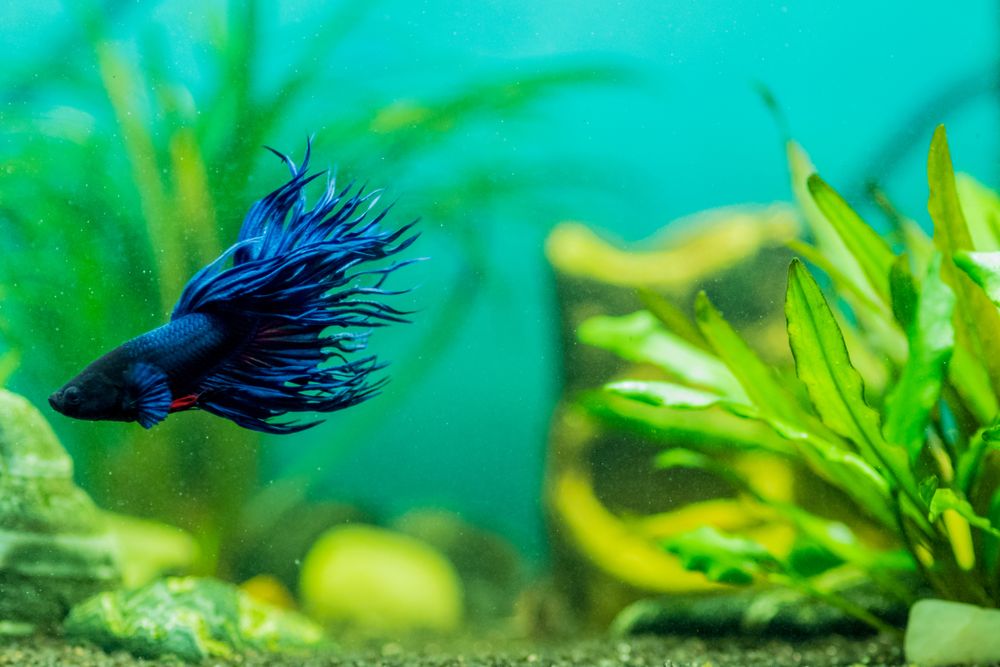Best Starter Aquarium

Choosing the best type of aquarium to start with depends on various factors including your budget, available space, and level of commitment. Here are some beginner-friendly options along with their pros and cons to help you make an informed decision:
1. Nano Aquariums (20-75 litres) #
Pros:
- Space-Saving: Fits well in small spaces like apartments or offices.
- Cost-Effective: Generally cheaper to set up and maintain.
- Easy to Manage: Smaller water changes and less maintenance.
Cons:
- Limited Stocking Options: Can only house a few small fish or invertebrates.
- Water Parameter Fluctuations: More prone to rapid changes in water quality, requiring diligent monitoring.
2. Standard Aquariums (75-150 litres) #
Pros:
- Balance of Size and Manageability: Provides more stability in water parameters while still being manageable.
- Variety of Fish: Can house a wider variety of fish and plants.
- More Aquascaping Options: Room for creativity with decorations and plants.
Cons:
- Higher Cost: More expensive than nano tanks but still affordable.
- More Space Required: Needs a dedicated space and sturdy stand.
3. All-In-One Aquariums #
Pros:
- Convenience: Comes with built-in filtration, lighting, and sometimes a heater.
- User-Friendly: Designed for ease of use, ideal for beginners.
- Aesthetics: Often sleek and modern in appearance.
Cons:
- Limited Customization: Built-in equipment may limit upgrade options.
- Cost: Can be more expensive upfront due to the integrated equipment.
4. Freshwater Planted Tanks #
Pros:
- Natural Look: Creates a beautiful, natural environment.
- Improved Water Quality: Plants help absorb toxins and provide oxygen.
- Lower Stress for Fish: Plants provide hiding spots and reduce fish stress.
Cons:
- Lighting Requirements: Need proper lighting for plant growth.
- Regular Maintenance: Plants require trimming and care.
5. Freshwater Community Tanks #
Pros:
- Diverse Inhabitants: Ability to keep multiple species of fish that coexist peacefully.
- Dynamic Environment: Active and interesting to watch.
- Educational: Learn about different species and their behaviors.
Cons:
- Compatibility Research: Need to ensure all species can live together harmoniously.
- Moderate Maintenance: Requires regular monitoring and upkeep.
Best Choice for Beginners #
For most beginners, a 75-150 litre standard freshwater aquarium is often the best choice. It strikes a good balance between manageability and stability, offering enough space to create a diverse and engaging environment without being overwhelming. Here's why:
- Stable Water Parameters: Larger water volume helps maintain stable conditions, making it easier to care for fish and plants.
- Stocking Flexibility: Allows for a greater variety of fish and plants, providing a more interesting and dynamic tank.
- Moderate Maintenance: While larger than a nano tank, it's still manageable in terms of maintenance and water changes.
- Affordability: Generally affordable to set up and maintain compared to very large or high-tech setups.
Key Considerations #
- Research: Invest time in researching the specific needs of the fish and plants you want to keep.
- Equipment: Ensure you have the necessary equipment (filter, heater, lighting, test kits) for maintaining a healthy environment.
- Maintenance Routine: Establish a regular maintenance routine, including water changes, filter cleaning, and monitoring water parameters.
- Patience: Take your time setting up the tank, cycling it properly, and gradually introducing fish.
Starting with a well-balanced, standard aquarium will provide a rewarding experience and a solid foundation for exploring the aquarium hobby further.
- Previous: Cycling A New Aquarium
- Next: Fish Suitable for a Beginner Aquarium
